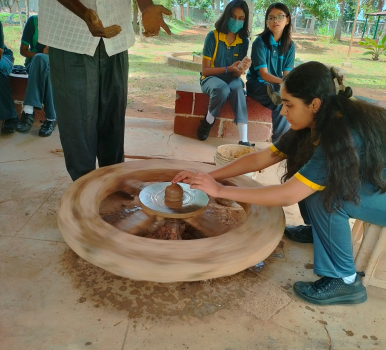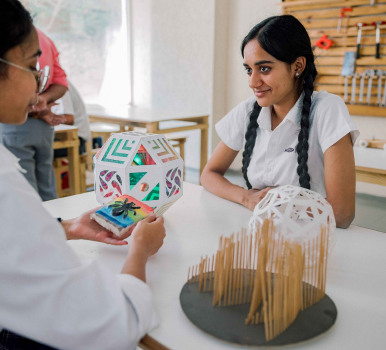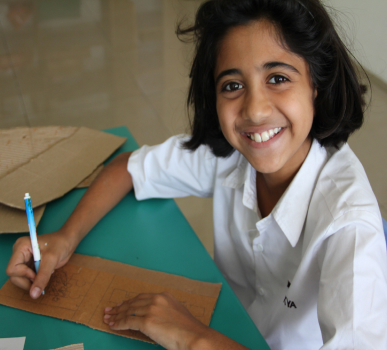Enrichment Programs | Design Thinking
Enrichment Programs
Design Thinking
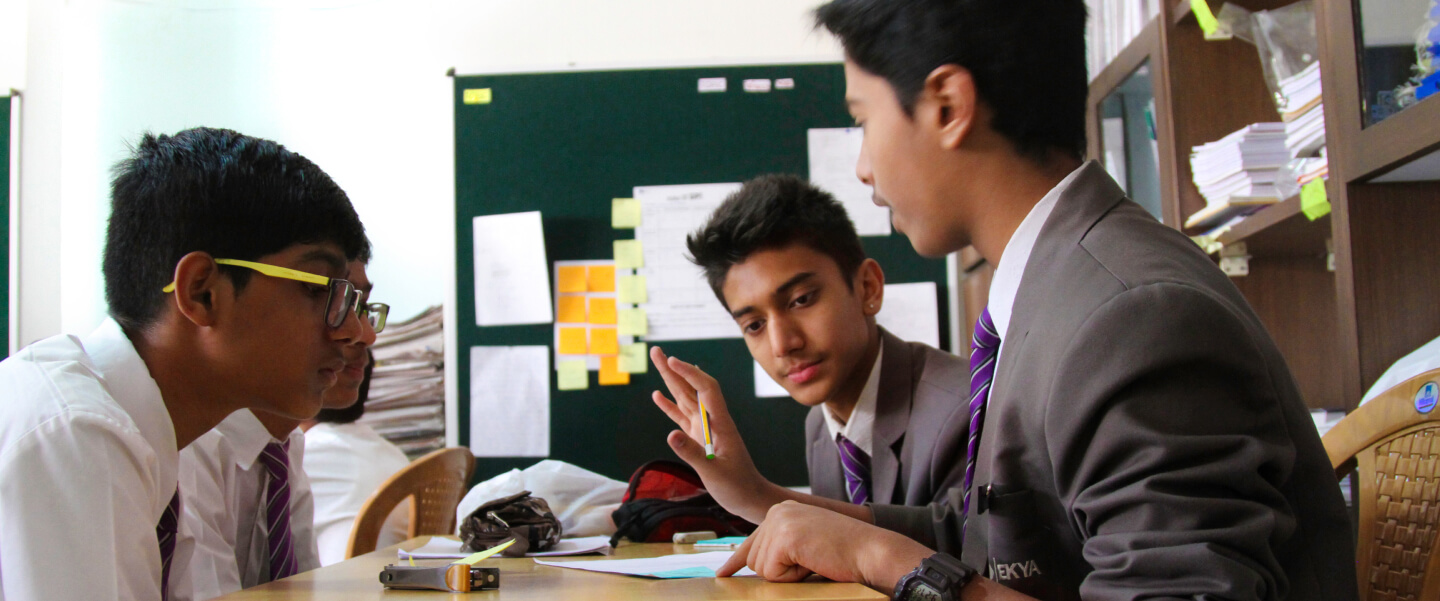

DESIGN THINKING PROGRAM

Design Thinking is a core concept at Ekya, which develops empathy, as students are made to look at societal problems. An experimental process in nature, design-thinking equips the child to think critically, identify insights, build on each other’s ideas, learn from failures and be risk-takers.
Through Design thinking challenges, students learn to work with multiple perspectives, access and make sense of information, apply critical thinking and intuition, iteratively learn from failure and create solutions that integrate both ideation and empathy.

THE DESIGN THINKING PROCESS:
The students use their skills as creative thinkers to build solutions to a socially relevant challenge through the iterative and hands-on Design Thinking process.
Identify the challenge through a brainstorming session and share observations.
Empathize with the Users/Stakeholders affected by the problem; Build an empathy map.
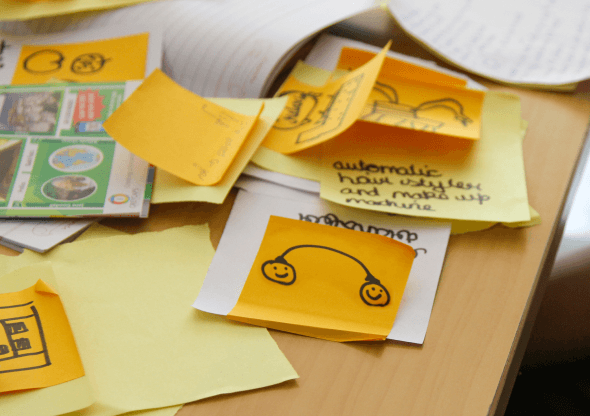

THE DESIGN THINKING PROCESS:
The students use their skills as creative thinkers to build solutions to a socially relevant challenge through the iterative and hands-on Design Thinking process.
Identify the challenge through a brainstorming session and share observations.
Empathize with the Users/Stakeholders affected by the problem; Build an empathy map.
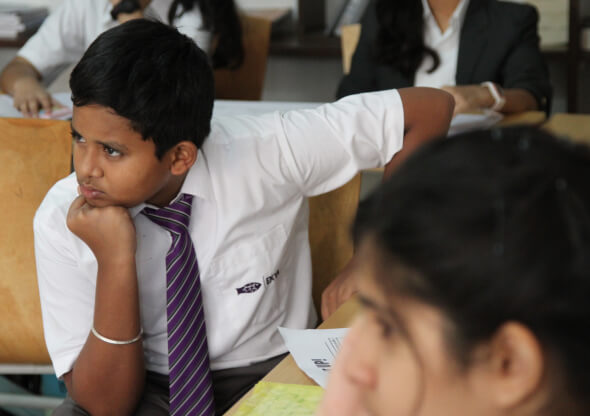
Use primary and secondary research to support findings about the problem.
Validate new information about the problem and share with the group.
Process information in a manner that makes meaning for the next steps; Build a point of view from which to work.
Use the point of view to think of multiple ways to solve the problem,

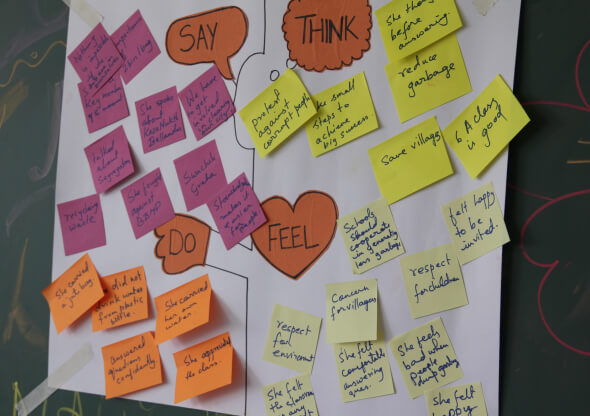
Narrow down possibilities to come up with the best way to solve the problem through feedback.
Build prototypes of the solution- an experience, a model, an illustration!
Use feedback from the user and peer groups and improve the prototypes
Share solutions to the problem with the community

The Design Thinking Timeline
At Ekya Schools, large-scale Design Thinking workshops have been conducted across campuses.
2015-16 : Design Thinking at Ekya School ITPL.
Problem Statement: “How might we create solutions for the growing garbage problem in Bangalore to improve the lives of local citizens?”
2016-17: Design Thinking at Ekya JP Nagar
Problem Statement: “How might we create solutions to better integrate Bangalore’s elderly into our society?”
2018-19: Design Thinking at Ekya Schools- ITPL, JP Nagar and BTM Layout
Problem Statement: “How might we create solutions to help citizens in Bengaluru lead a healthier lifestyle?”
2022-23: Design Thinking at Ekya Schools- ITPL, JP Nagar and BTM Layout
Problem Statement: “How might we make recycling more accessible to the citizens of Bengaluru?”
2023-24: Design Thinking at CMR National Public Schools
“How might we ensure the safety of stray animals while also protecting the well-being of local citizens?”.
2024-25: Design Thinking at FIND Festival
“How might we find innovative and sustainable packaging solutions that encourage recycling in an eco-friendly manner?”
2025-26: Design Thinking at Ekya Schools aligned to our Service Learning
Projects- “How might we encourage citizens of Bangalore to reduce & recycle waste through sustainable practices?” & “ How might we nurture kindness to develop a sense of belonging for the visually impaired citizens of a community?
Design Thinking Tool Kit
Projects
Smart Bin

Students designed a ‘smart bin’ that rewards people who segregate waste and put them into the right bins.
Garbage Scanner

Students, in this project, designed a scanner that will help scan garbage and tell citizens in which bin they should dispose the garbage.
Dust App

Students designed an app that allows citizens to locate garbage bins around their homes. The garbage bins are fitted with sensors that have shutters that keep them closed, especially beneficial during rainy seasons and preventing unpleasant odours.
Crew Aider

Students created a device that would help the elderly who had problems related to hand and arm movements and could not sign documents/ hold pens or pencils. The device was designed to hold a strap fixed to a frame that would support the wrist of the person who needs to sign/ write.
Energy Tracks

Students designed a track to be placed on footpaths that will use the energy from the track to turn street lights on. They encouraged the need for the elderly to walk and keep fit. They also designed special wheelchairs that move on these tracks as well.
The E-Pill Reminder

Student Voices
